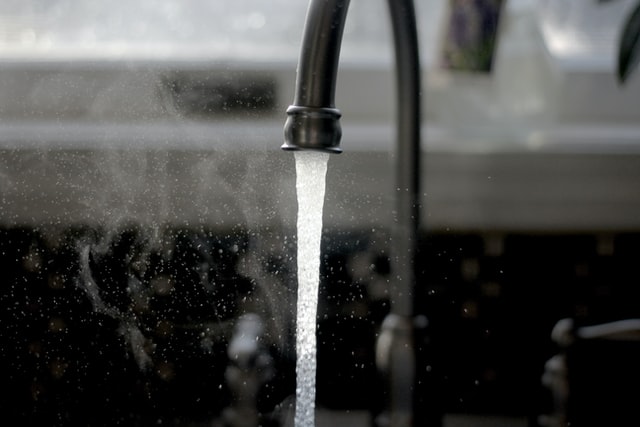How to Take Care of Your Boiler
Ensuring your boiler is well maintained is not just important for its longevity, but it will also help you avoid expensive repairs and ensure it is running at maximum efficiency, reducing your heating costs and maximising the heat generated.
So, what can you do to take proper care of your boiler?

Here are some of the most practical and simple measures Quality Property Care has, so you can take to ensure your boiler maintains top performance for as long as possible:
Get Your Boiler Serviced Yearly
Did you know that most boiler manufacturer warranties stipulate the need for an annual service for them to remain valid?
During a service, the registered Gas Safe Engineer will carry out visual inspection of the internal and external areas of the boiler, looking for signs of common problems and rectifying them when required, e.g. a faulty diverter valve.
Most times, it is far better to get a problem rectified at an early stage, rather than waiting for the problem to deteriorate, as this will often mean more expensive repairs.
Not only is an important benefit of a service boiler maintenance and to keep the boiler’s warranty valid, but it is essential for safety too. An engineer will check for gas leaks and any other safety issues.
Once complete, the engineer will supply you with a certificate notifying you that the boiler has passed the service. This evidence can then be supplied to your boiler manufacturer should you need to use the warranty.
Bleeding Your Radiators
Over time, excess air can build up within your central heating system, leading to cold spots in your radiators and the uneven distribution of heat throughout your central heating system.
To rid your system of the excess air, you need to bleed your radiators periodically.
This is a relatively simple process that you can do yourself. To execute it, all you need to do is open the radiator valves to release the air, which you can do with a radiator valve key (available at most DIY stores).
Here is an easy-to-follow, step-by-step guide on how to bleed your radiators.
Get Your System a Power Flush
The quality of your system’s heating water is often overlooked, but poor-quality heating water is a leading cause of the corrosion, blockages, and poor water circulation. These issues can lead to significant damage to major components, cold spots, and the uneven distribution of heat throughout your home’s radiators.
Over time rust, dirt, and other residues can build up within the water, having a negative impact on its quality. Eventually, this can lead to the development of the thick, brown substance referred to as sludge. This viscous substance can have a major impact on water flow, increase the risk of corrosion, and cause blockages.
That is where a power flush can be useful and is recommended to be carried out every 5 years. A power flush is an intense, deep clean of the heating system (including the boiler), which helps improve water quality and remove the harmful residues, including sludge.
A power flush uses high pressure and a mixture of cleaning chemicals to rid the system of contaminants. You typically carry it out by a registered Gas Safe Engineer.
Check Your Boiler Pressure
Your boiler’s pressure can have an enormous impact on its efficiency and performance, and if it drops too low, it can completely stop the boiler from working. Typically, when this happens, the boiler will cut out and display a relevant error code.
Your boiler requires a certain level of pressure to keep the water within the system flowing at the optimum rate. This is important, as if it falls too low, circulation will not be sufficient for the water to remain heated, resulting in cold or lukewarm water.
Over time, it is common for boilers to lose pressure, while more sudden and significant drops can result from a boiler problem e.g. leaks.
You can check the pressure at the pressure gauge, this is usually just below the boiler unit. The needle should lie within the optimum range, it usually indicates which sitting within a green-coloured area. In most boilers, it shows low pressure when the needle sits below the 1 bar.
Topping up the pressure is relatively easy to do, but it can vary between boiler manufacturers. For this reason, refer to your boiler’s manual, and if you want to, you can always consult a registered Gas Safe Engineer to assist you.
- Carbon Monoxide
We know carbon monoxide as the silent killer – it is an odourless, colourless gas that can be fatal if inhaled.
For this reason, you must have a carbon monoxide detector. This will quickly alert you to the presence of carbon monoxide in your home in the event of a gas leak.
As a result, it is important to regularly check your carbon monoxide detector. Ensure that the batteries do not need replacing and test to make sure it is still working e.g. the alarm is still operating.
Also, make sure that the detector is free from any obstructions as proper ventilation is vital for its function. That means that the area around the detector should be free from any objects.
Make sure to always refer to and read the detector’s user manual to learn how to use the detector as the manufacturer intended.
Taking Care of Your Boiler – Final Words
It is easy to forget about your boiler, but as the cornerstone of your home’s warmth and comfort, it really deserves some TLC from time to time.
By committing to regular inspections and maintenance of your boiler, you are committing to improving its performance and efficiency, while ensuring it is safe to use. Therefore, helping to save money and keep your family safe.
And remember, it is far easier to deal with minor issues as they arise, rather than waiting for them to develop into an expensive repair, or even worse, until you require a complete boiler replacement.